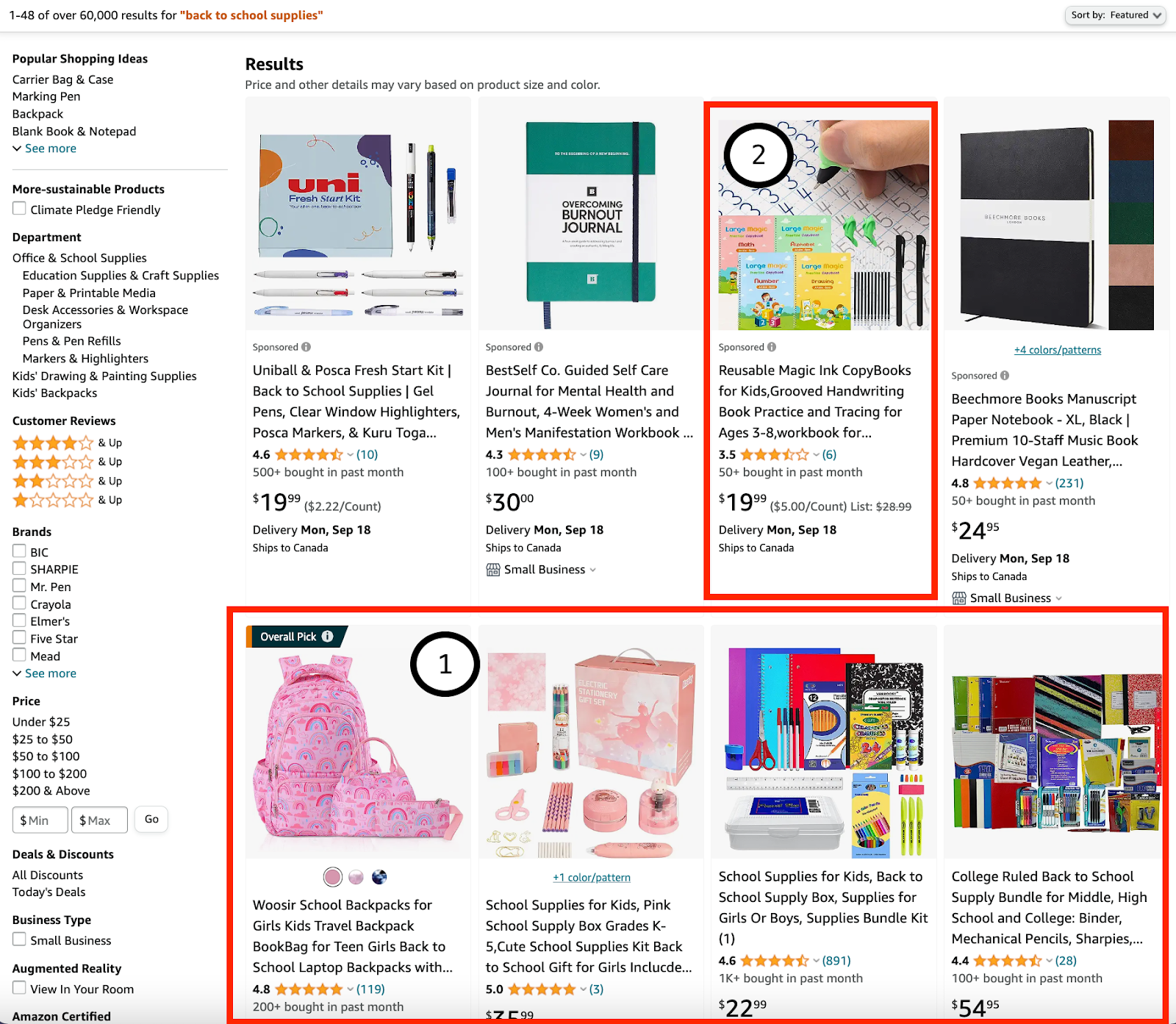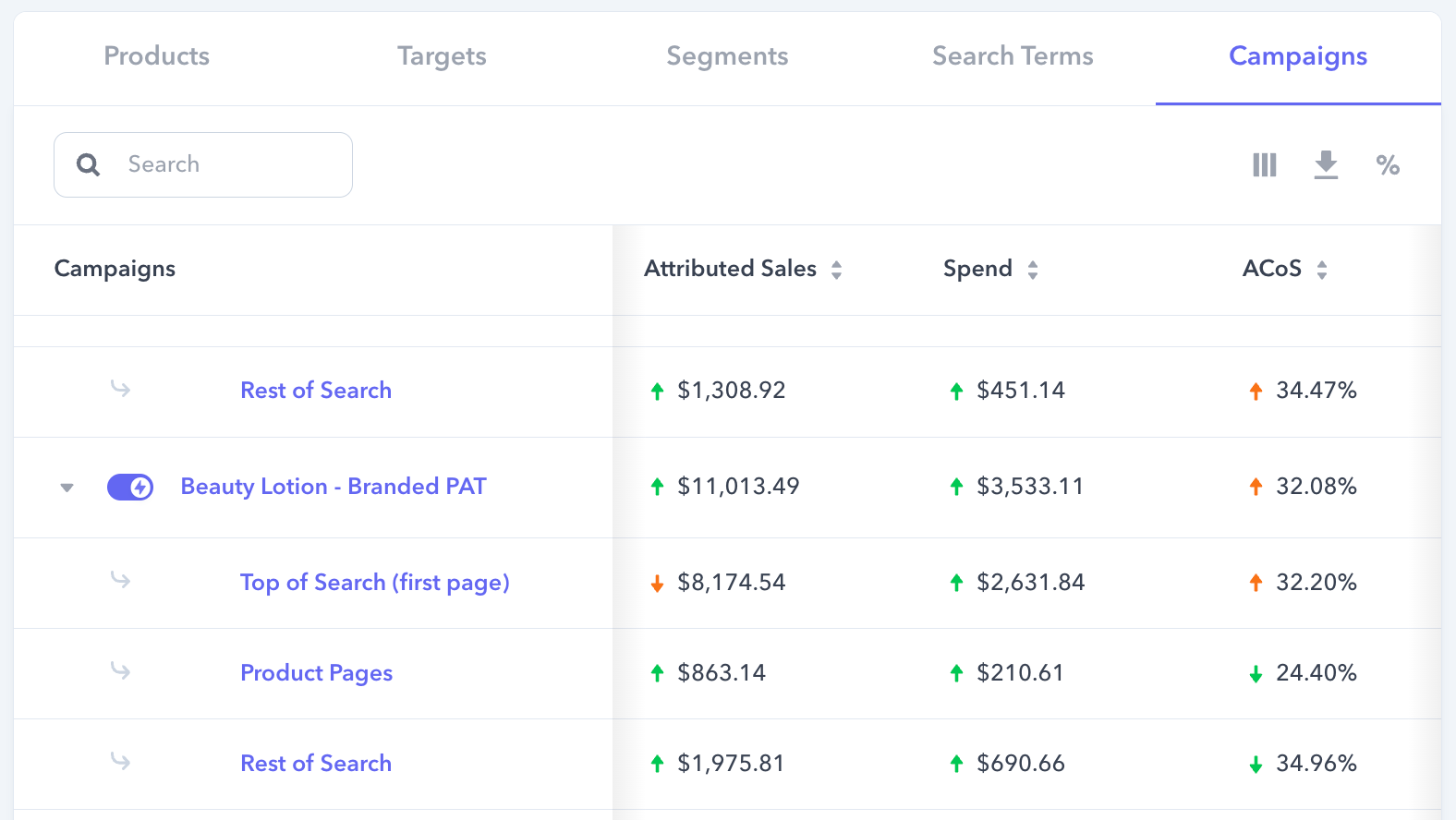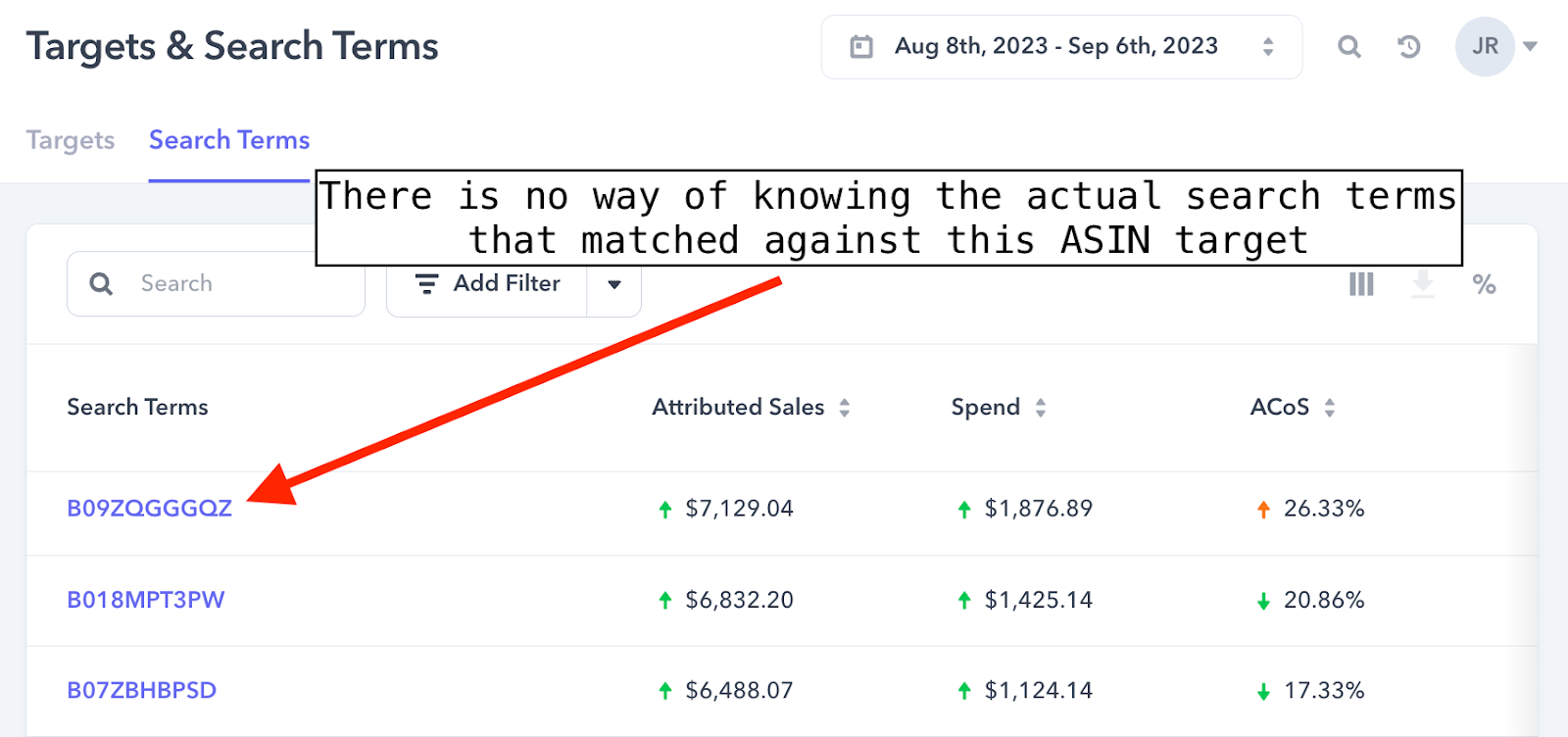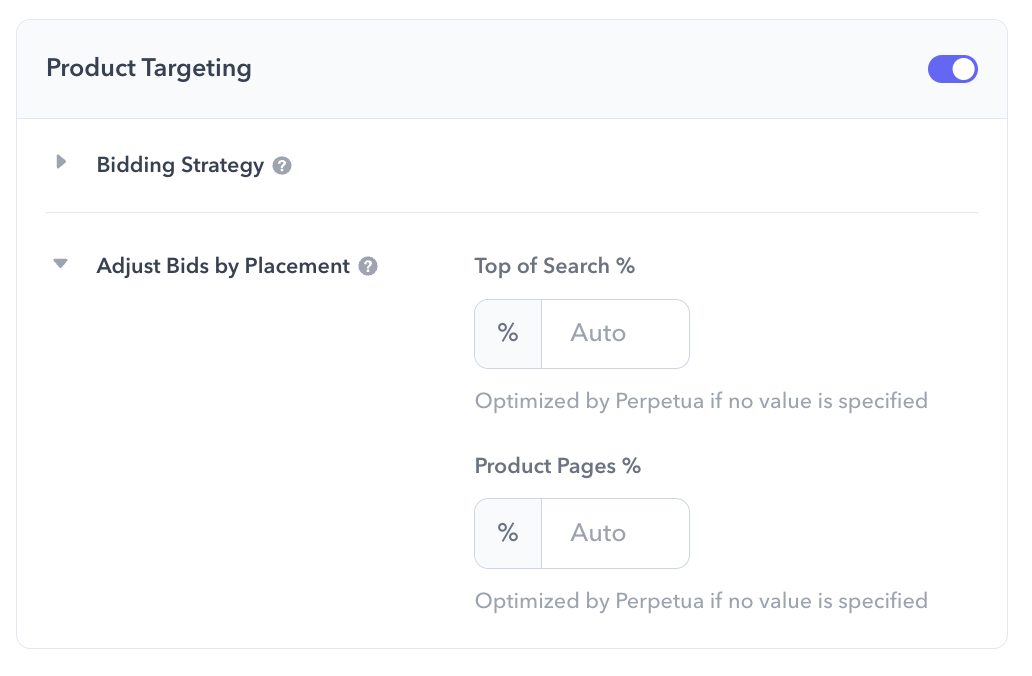
Product targeting and dark search—what you need to know
Joe Rideout, January 18, 2024
Table of Contents
Did you know that your Sponsored Products product targeting (PAT) campaigns are eligible for Top of Search placements? Let me repeat that…your PAT campaigns may be showing ads on the search results page. While advertisers may already be vaguely aware of this, many may not yet have considered the full impact of this behavior.
Advertisers typically associate keyword targeting with the search results page and PAT targeting with the Product Detail Page (PDP). However, we frequently see product targeting campaigns that see upwards of 80% of spend coming from Top of Search placements, albeit with no insight into which search terms these placements are appearing for. This lack of visibility is why this is often dubbed 'dark search' traffic. To learn more about the challenges and opportunities offered by dark search traffic, read on.
Placements 101
Amazon created quite a stir recently when they announced that Sponsored Products (SP) ads would soon be eligible for off-Amazon placements. While the Sponsored Products ad type remains synonymous with search in many advertisers' minds, the search results page (SERP) is only one of the possible placements for your SP campaigns. Let’s do a quick recap of where your Sponsored Products ads can show up. There are four broad categories of placements:
Top of Search (ToS)
Rest of Search (RoS)
Product Detail Page (PDP)
Off-Amazon (coming soon…)

Targeting 101
Now let’s review the two broad categories of targeting within Sponsored Products campaigns:
Keyword targeting: Choose keywords to help your products appear in shopper searches.
Product targeting: Choose specific products, categories, brands or other product features to target your ads.
The official descriptions make it sound like keyword targeting is predominantly focused on search placements (ToS and RoS) and product targeting is predominantly focused on PDP placements. However, it’s important to note that both targeting types are eligible for all placement types.
You are likely very familiar with keyword targets. Here’s an example:

Product targets can either be individual ASINs or PAT expressions that target clusters of ASINs meeting certain criteria (e.g. specific categories). Here’s an example:

How do product targets match to search terms?
If we've established that campaigns that target ASINs can win impressions on the SERP, the question is: when does this happen? The answer lies in the organic search results on that page.

The screenshot above shows the SERP for the search term back to school supplies. If you have a PAT campaign that is targeting one of the top organically ranked products (marked 1 above), then your ad may appear in a ToS or RoS placement on this page (e.g. placement marked 2 above).
How high does a product have to be ranked organically in order for it to be considered a match? There is no hard and fast limit here and it seems to depend on the search term. From our experience, if you target the number 1 organically ranked product on any search term, your ad will be eligible for placement on that search term’s SERP.
Classifying traffic from competitor and branded PAT campaigns
There are some profound implications here on how you measure and think about the classification of your traffic. Just because it comes from a competitor or branded campaign, it doesn't mean it is competitor or branded traffic. Let's look at a few examples.
Competitor PAT campaigns
Targeting competitor keywords is an aggressive strategy. You are paying to put your product in front of shoppers who are already in the consideration phase for your competitor’s brand. The payoff can be big if you’re able to convert them, but the price can be high. Expect higher CPCs and lower conversion rates on these keywords. Trying to win organic rank on a competitor keyword is not a tactic that we often see employed.
If you are targeting competitor ASINs however, you may see completely different ad performance dynamics. If your competitor ranks highly on high volume category search terms, then these targets could see your ad being shown on the SERP for those category search terms. For this reason, we often see much better conversion rates and lower ACOS on competitor PAT vs competitor keywords. Why? Because the majority of the traffic is coming from category search terms!
Branded PAT campaigns
If your own products rank high up in the organic results for category search terms, then your branded PAT campaigns (targeting your own brand’s ASINs) may end up showing on the SERP for those search terms. If you don’t usually get a lot of branded searches then this can result in your branded PAT campaigns seeing a lot more spend and sales than your branded keyword campaigns. You may also inadvertently misclassify spend as branded—based on the campaign type—when in fact the majority of the spend and sales are coming from your ad being shown on the SERP for category search terms.
What makes all of this worse, as we’ll explain below, is that there is no way of measuring which category search terms your product-targeting campaigns are being shown on—this information is obscured in the search term reports for Sponsored Products.
Measuring Top of Search placements for PAT campaigns
In order to see how much spend is going towards search placements in your product targeting campaign, you’ll need to look at campaign-level placement reports. This can be done in Perpetua by going to the “Campaigns” tab within the goal deep dive view and expanding the campaign to see the breakdown of metrics by placement. In the example Branded PAT campaign in the screenshot below, the spend and sales are completely dominated by ToS placements.

What is 'dark search' and how does it appear in search term reports?
In the search term reports for product-targeting campaigns, the “search term” column always contains an ASIN. So even if the click occurred on a ToS placement, there is no way of telling what text the shopper entered into the search box. When you run PAT campaigns, your ads will be showing up on search terms and you have no visibility into what those search terms are. For this reason, we casually refer to clicks on search placements within product targeting campaigns as “dark search” traffic.

Can I turn off search placements for PAT campaigns?
In a perfect world, advertisers would be able to turn off certain placement types. This would allow us to focus our keyword campaigns on search placements and focus our product-targeting campaigns on PDP placements. Unfortunately, this capability is not yet available on Amazon.
One lever advertisers do have access to is placement multipliers, which are available both within the Amazon ad console and within Perpetua (see below):

However, these multipliers can only be used to boost bids by placement, not suppress bids. This means that If you were looking to focus your product-targeting campaigns on PDP placements, you would need to set low bids at the target level and then apply a high bid multiplier to just the Product Pages placement.
Conclusion—the better you understand where your ad spend is going, the more effectively you can direct it
Search placements on product targeting are not necessarily a bad thing. In fact, we’ve seen examples where product-targeting campaigns are more effective at winning ToS placements than keyword campaigns. Product targeting can even be used effectively to boost organic rank. The important thing is that advertisers are aware of this effect and direct their ad spend accordingly.
To get started or learn more about how Perpetua can help you scale your Amazon Advertising business, contact us at hello@perpetua.io